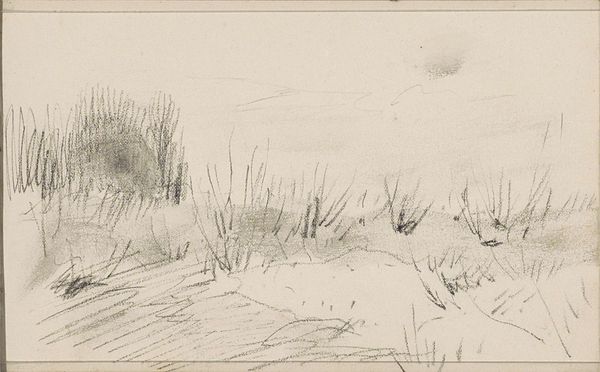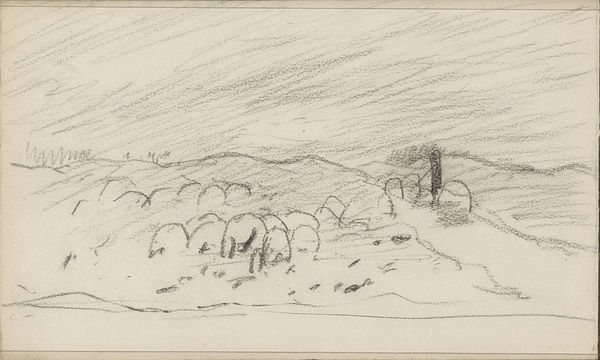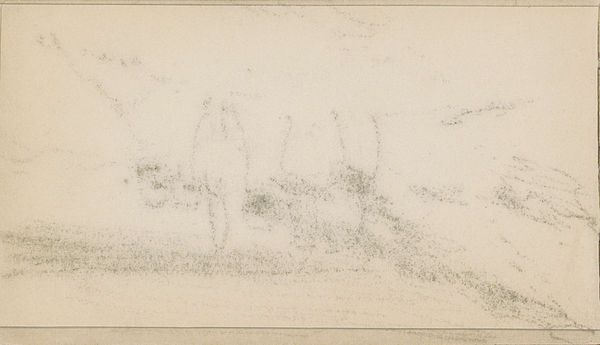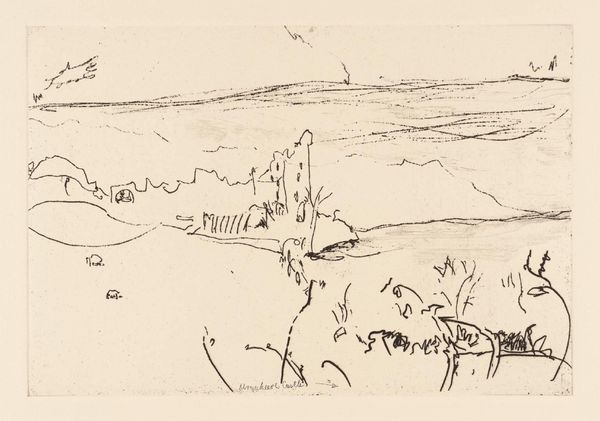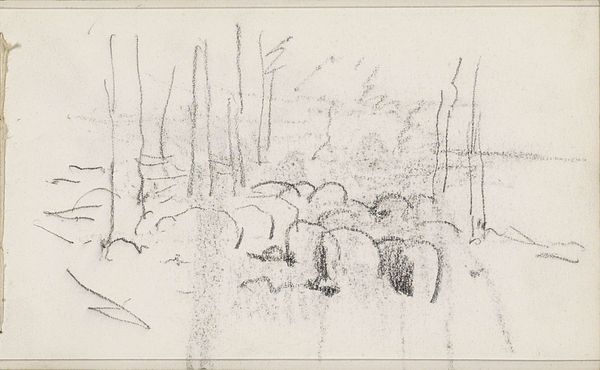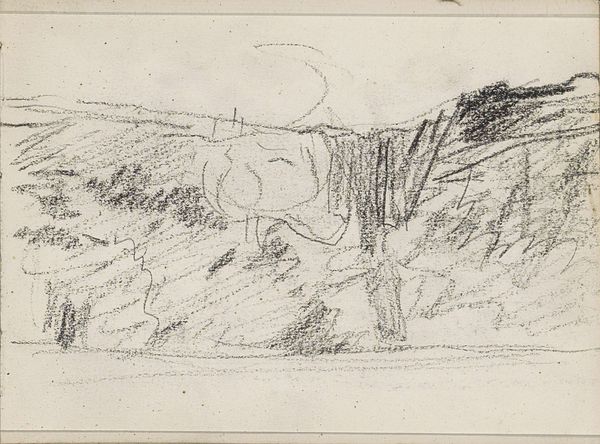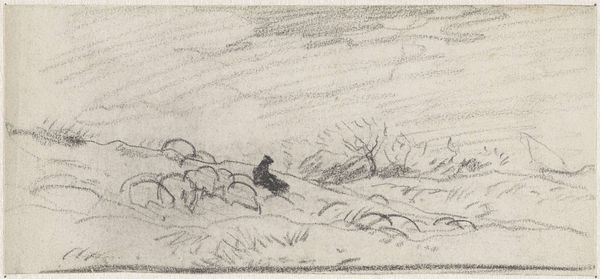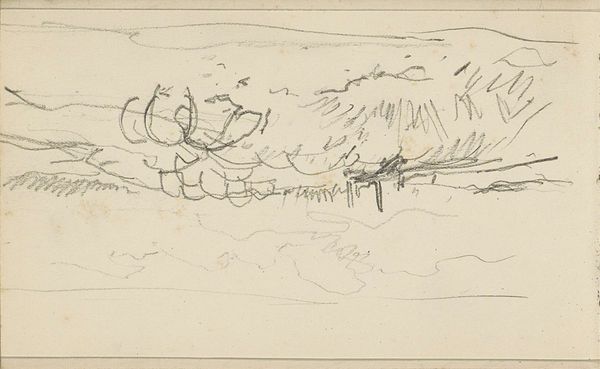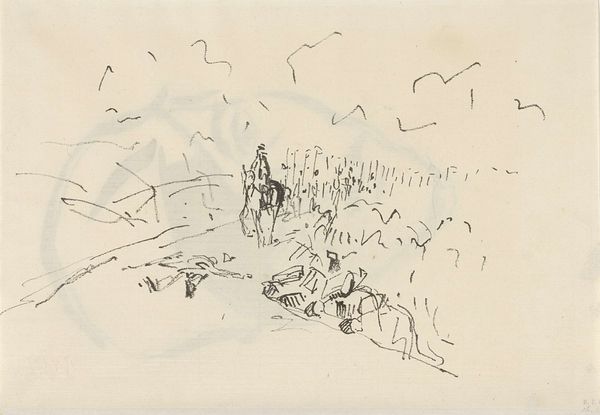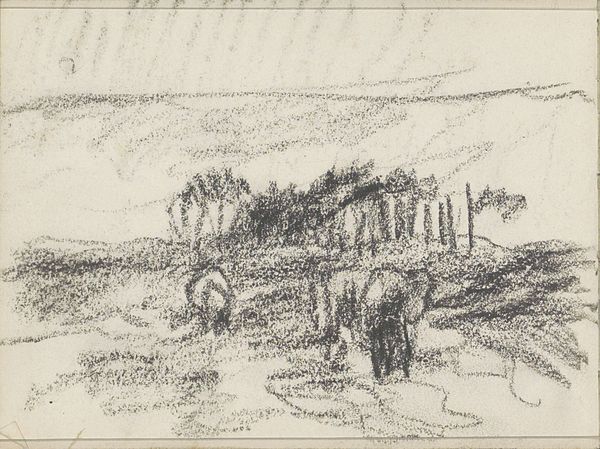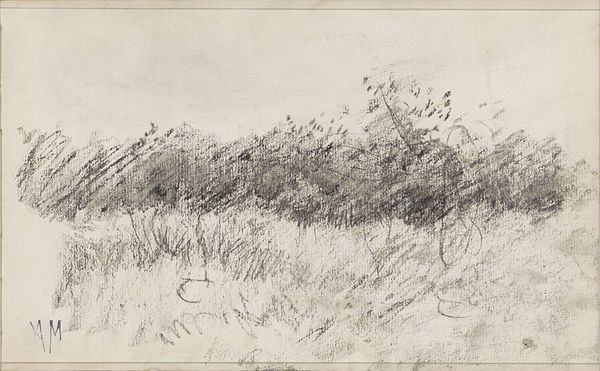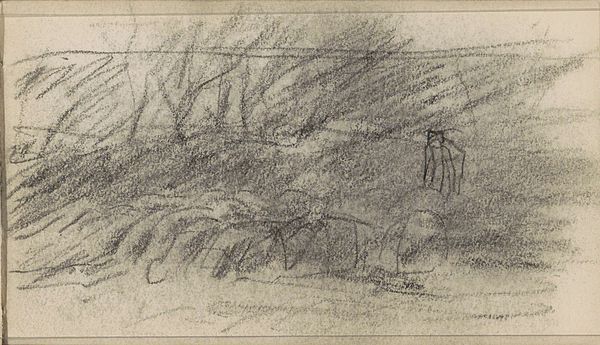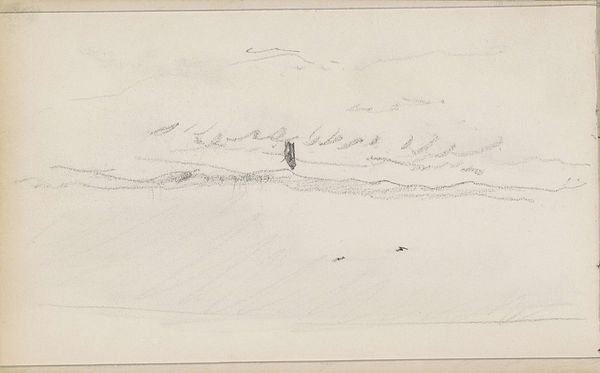
drawing, pencil, charcoal
#
drawing
#
landscape
#
pencil
#
charcoal
#
realism
Copyright: Rijks Museum: Open Domain
Curator: It's incredible how a few simple lines can evoke so much, isn’t it? This drawing, entitled "Herder met een kudde schapen in een landschap" which translates to "Shepherd with a Flock of Sheep in a Landscape," was created by Anton Mauve circa 1876-1879 and is now held at the Rijksmuseum. It is done in pencil and charcoal. Editor: Immediately I get this lonely, windswept feeling. It’s so minimal, just a charcoal breath on paper, but there's such atmosphere. The herder is barely there, almost a shadow amongst the flock. Curator: Absolutely. Mauve was very influential in the Hague School, which sought to capture the atmosphere and rural life of the Dutch landscape. His subject matter aligns with what we know of nineteenth-century rural romanticism and is devoid of industrial encroachment. Editor: There’s something timeless about it, too. I mean, look at those sheep, more sketched suggestions than fully formed beings. They ripple across the field like some kind of blurry dream. They're there and not there; maybe a statement about the fleeting quality of life and its elements? Curator: The ephemeral nature is partially in part to his quick sketches. It gives the feeling of light hitting it. Many would call this kind of realism—and some do—but it actually hearkens back to older landscape practices. You have to remember, there are underlying power structures at play here. Editor: Interesting. Power structures in a sheep field? Tell me more. Curator: Yes. The romantic image of rural life served to paper over social inequalities inherent to a quickly urbanizing society. Depicting herders rather than factory workers presents an idealized past, safely devoid of contemporary struggle. A national and perhaps nationalist narrative? Editor: Okay, that makes a lot of sense, thinking of the socio-political backdrop of the time. I guess, I am guilty as the next artist for enjoying these idyllic places without realizing my rose-colored lenses! Despite this new information, though, the sheer economy of line is still powerful. He does so much with so little. I almost want to feel that bleak quiet that Mauve put onto paper. Curator: That is the true impact. We might intellectually contextualize art and understand the cultural nuances behind it, but emotion will remain an artwork’s most compelling voice. Editor: Right. A dialogue then between mind and heart. Always necessary. Thanks for the insights!
Comments
No comments
Be the first to comment and join the conversation on the ultimate creative platform.
